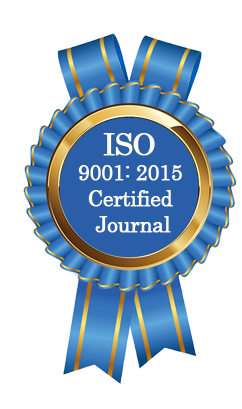| All | Since 2020 | |
| Citation | 105 | 60 |
| h-index | 4 | 4 |
| i10-index | 3 | 2 |
WJAHR Citation 
Login
News & Updation
Best Article Awards
World Journal of Advance Healthcare Research (WJAHR) is giving Best Article Award in every Issue for Best Article and Issue Certificate of Appreciation to the Authors to promote research activity of scholar.
Best Article of current issue
Download Article : Click here
Indexing
Abstract
STUDY ON RISK FACTORS FOR RELAPSE IN CHILDHOOD NEPHROTIC SYNDROME PRESENTING IN RIMS, RANCHI
Dr. (Prof.) Rajeeva Mishra, Dr. Shiromani Kumari* and Dr. Jagrita Malakar
ABSTRACT
Background: Nephrotic syndrome (NS) is a disease characterised by heavy proteinuria, hypoalbuminemia (serum Albumin 200mg/dl) & edema. Nephrotic range proteinuria is present if early morning urine protein is 3+/4+ (on dipstick or boiling test), urine albumin excretion >40 mg/m2 per hr (on a timed-sample) or spot urine protein/creatinine ratio > 2.[1] The risk factors associated with frequent relapse of Nephrotic Syndrome are early age at onset, delayed time to achieve remission with steroid in 1st attack, presence of upper respiratory tract infection or any other associated infection during 1st episode or during relapse, more number of relapses in first six months after initial episode, shorter time interval between 1st episode and first relapse, inadequate/irregular initial therapy, history of hematuria, hypercholesterolemia and low serum albumin during initial diagnosis as shown in various studies.[2-5] In our country, inadequate health care facility, less organized referral system, lack of adequate knowledge about disease course among parents are great problems in early detection and treatment of relapse cases. Hence, prediction & prevention of risk factors is the key to successful management of childhood Nephrotic Syndrome. Objective: To evaluate different risk factors associated with the group of frequent relapsing Nephrotic Syndrome compared to the group of infrequent relapsers. To identify certain risk factors as predictors for frequently relapsing Nephrotic Syndrome, to address those risk factors and minimize frequency of relapses. Method: This hospital based cross-sectional observational study was conducted in the Department of Pediatrics, Rajendra Institute of Medical Sciences, Ranchi, Jharkhand, over a period of 1 year from June 2020-May 2021. A total of 100 children who met the inclusion criteria were enrolled into the study. Results: Mean age at onset was 6.5±3.374 years. Boys constituted 71% (71 out of 100 children) & girls 29% (29 out of 100) of total study population. Among 100 patients with SSNS, 39 patients were included in FRNS group, rest 61 patients were in IFRNS group. In this study, male to female ratio was 2.4:1. Mean age of onset in FRNS group in this study was lower in comparison to the IFRNS group but the difference was found to be statistically insignificant. Presence of infection during 1st episode played a statistically significant role for relapse (p
[Full Text Article] [Download Certificate]
